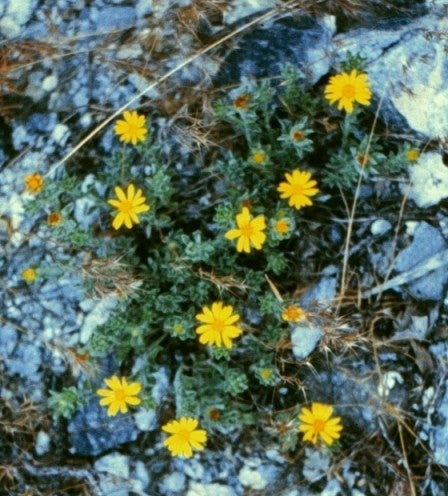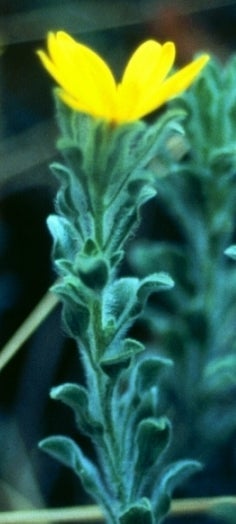Heterotheca monarchensis York, Shevock & Semple is a rare species found only in one small area of in Kings River Canyon, Fresno Co., California. It can be superficially similar to densely hairy specimens of H. sessiliflora var. bolanderioides and to individuals of subsp. sessiliflora that are silvery white, but those usually have ovate-lanceolate distal cauline leaves, while H. monarchensis has oblanceolate ones. All three can have heads partially surrounded by distal leaves and long, subtending, leaf-like bracts. Their ranges do not overlap, however. Specimens of H. monarchensis can be confused with H. villosa varieties; the latter lack the long, thin corolla hairs present on corolla lobes of H. monarchensis. The species has a small number of known populations and is therefore of conservation concern.
1-2. Heterotheca monarchensis, photographs by Dana York. 1. Small plant. 2. stem leaves and head.
Last revised 21 April 2025 by J.C. Semple
© 2025 J.C. Semple, including all photographs unless otherwise indicated



